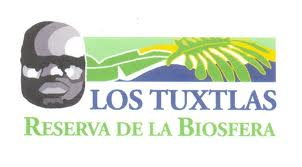Island Stories:
![]() Danzig
Mine
Danzig
Mine
![]() Zeballos
Iron Mine
Zeballos
Iron Mine
![]() Conuma
Peak 1910
Conuma
Peak 1910
Alexandra Peak
Argus Mountain
Bate/Alava Sanctuary
Beaufort Range
Big Interior Mtn
Big Interior Mtn 1913
Part 1
Part 2
Bolton Expedition 1896
Cliffe Glacier
Clinton Wood
Comox Glacier
Comox Glacier 1922
Comox Glacier 1925
Comstock Mtn
Conuma Peak
Copper King Mine
Crown Mtn
Elkhorn 1912
Elkhorn 1949
Elkhorn 1968
Eugene Croteau
Golden Bullets
Golden Hinde 1913/14
Golden Hinde 1937
Golden Hinde 1983
Harry Winstone Tragedy
Jack Mitchell
Jim Mitchell Tragedy
John Buttle
Judges Route
Koksilah's Silver Mine
Landslide Lake
Mackenzie Range
Malaspina Peak
Mariner Mtn
Marjories Load
Matchlee Mountain
Mount McQuillan
Mt. Albert Edward
Mt. Albert Edward 1927
Mt. Albert Edward 1938
Mt. Becher
Mt. Benson 1913
Mt. Benson
Mt. Doogie Dowler
Mt. Colonel Foster
Mt. Hayes/Thistle Claim
Mt. Maxwell
Mt. Sicker
Mt. Tzouhalem
Mt. Whymper
Muqin/Brooks Peninsula
Nine Peaks
Queneesh
Ralph Rosseau 1947
Rosseau Chalet
Ralph Rosseau Tragedy
Rambler Peak
Red Pillar
Rex Gibson Tragedy
Sid's Cabin
Steamboat Mtn
Strathcona Park 1980's
The Misthorns
The Unwild Side
Victoria Peak
Waterloo Mountain 1865
Wheaton Hut/Marble Meadows
William DeVoe
Woss Lake
You Creek Mine
Zeballos Peak
Other Stories:
Sierra
de los Tuxtlas
Antarctica
Cerro del Tepozteco
Citlaltepetl
Huascaran
Mt. Roraima
Nevada Alpamayo
Nevada del Tolima
Nevado de Toluca
Pico Bolivar
Popocatepetl
Uluru/Ayers Rock
Volcan Purace
Volcan San Jose
Biographies
Island 6000
Cartoons
Order the Book
Contact Me
Links

Sierra
de los Tuxtlas
by Lindsay Elms
 The
Sierra de Los Tuxtlas (Tuxtlas Mountains) are a volcanic belt and mountain
range along the southeastern Veracruz Gulf coast in Eastern Mexico. The
Los Tuxtlas Biosphere Reserve (Biósfera Los Tuxtlas) includes the
coastal and higher elevations of the Sierra de Los Tuxtlas.
The
Sierra de Los Tuxtlas (Tuxtlas Mountains) are a volcanic belt and mountain
range along the southeastern Veracruz Gulf coast in Eastern Mexico. The
Los Tuxtlas Biosphere Reserve (Biósfera Los Tuxtlas) includes the
coastal and higher elevations of the Sierra de Los Tuxtlas.
The volcanic mountains were used as a basalt source by the Olmec culture during the Early Formative period (1500 BCE to about 400 BCE). Quarried basalt was transported by raft through a network of rivers, to sites in the Olmec heartland for use in creating monuments, including colossal heads.
Peaks in
this range include Volcano Santa Marta and Volcano San Martín Tuxtla
(1650m). San Martín Tuxtla is the only recently active volcano
in the belt, erupting in 1664 and again in May 1793. It is a broad alkaline
shield volcano with a one kilometre wide summit and a crater that is 150
metres deep. The 1793 eruption occurred from two cinder cones in the summit
crater and produced widespread ashfall and lava flows that extended 3.5
kilometres down the northeast flank. Hundreds of smaller cinder cones
are prevalent throughout the Sierra. Other extinct volcanoes include San
Martin Pajapan (1160m) and Cerro El Vigia (800m).
The Sierra de Los Tuxtlas volcanoes are an insular anomaly. The volcanoes
are separated from the nearest volcano in the Trans-Mexican Volcanic Belt
(Orizaba, Popo and Ixta) to the west by about 250 kilometres, and from
the Central American Volcanic Belt to the southeast by almost 330 kilometres.
The upper flanks of the San Martín Tuxtla and Santa Marta volcanoes are covered with the Neotropical Sierra de los Tuxtlas tropical rainforest eco-region of the tropical and subtropical moist broadleaf forests Biome. The lower portions are covered with stunted pastures and grasslands.
The government started protecting the Neotropical moist forest in the region of Los Tuxtlas in 1979 when 5,000 hectares around the San Martín Volcano were declared a protected forest and a wildlife refuge. In 1982, this protected area was expanded to 20,000 hectares and classified as Special Biosphere Reserve. Another region in Los Tuxtlas, the Sierra Santa Marta, was declared a protected forest and wildlife refuge in 1980 with an area of 20,000 hectares and re-classified two years later as Special Biosphere Reserve. In 1998, the two reserves were combined to create the Los Tuxtlas Biosphere Reserve.
This region is characterized by its notable diversity of plant and animal life and is a refuge for many rare and threatened species that have been displaced from other areas of Mexico, including 19 endangered mammals. The region boasts the highest bird diversity in Mexico in terms of comparable area. Los Tuxtlas is also the northern geographic limit of the moist Neotropical forest in North America. The Los Tuxtlas ecosystem is fundamental to the regions rainwater retention and provides the main water source for important surrounding cities such as Coatzacoalcos, Minatitlán, Acayucan, San Andrés Tuxtla and Catemaco.
Due to its geographic location, wide altitudinal range, mountain slopes, and its position with respect to the wet winds of the Gulf of Mexico, the Los Tuxtlas region has great biodiversity. Nine different types of vegetation have been identified in the area.
Los Tuxtlas
is one of the most-studied protected areas in Latin America, and as a
result, tropical deforestation has been well documented. Despite several
studies and investigations by national and international academic institutions,
and regional government programs for social development, the region's
high rates of deforestation, illegal commerce of wild animals, and water
pollution have not slowed in recent years. The regions agricultural and
livestock activities have caused the loss of more than 85% of the original
forest cover. Since the area's designation as a biosphere reserve in 1998,
the government has implemented a series of programs and actions to promote
sustainable development projects to diversify the local means of production
and not damage the environment. Despite these efforts to protect the reserve's
biological integrity, Los Tuxtlas is considered critically threatened.
How to order | | About the Author || Links || Home
Contact:
Copyright ©
Lindsay Elms 2001. All Rights Reserved.
URL: http://www.beyondnootka.com
http://www.lindsayelms.ca